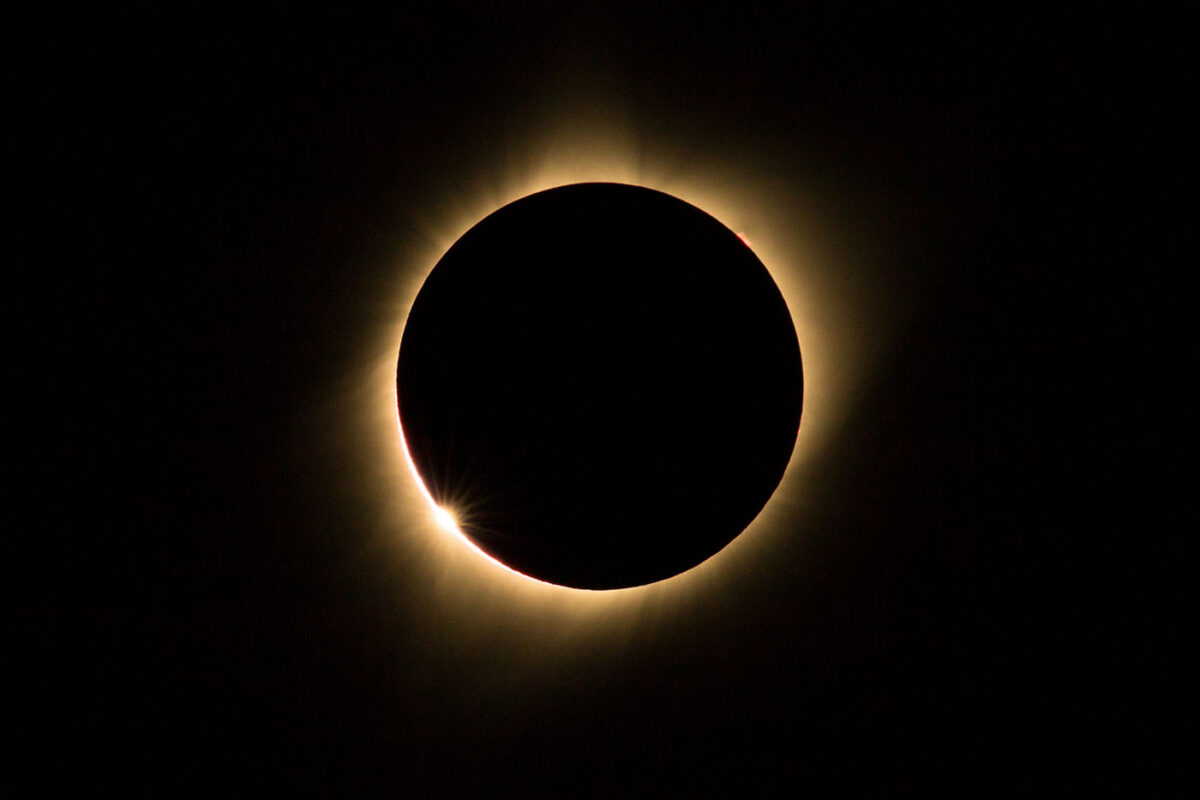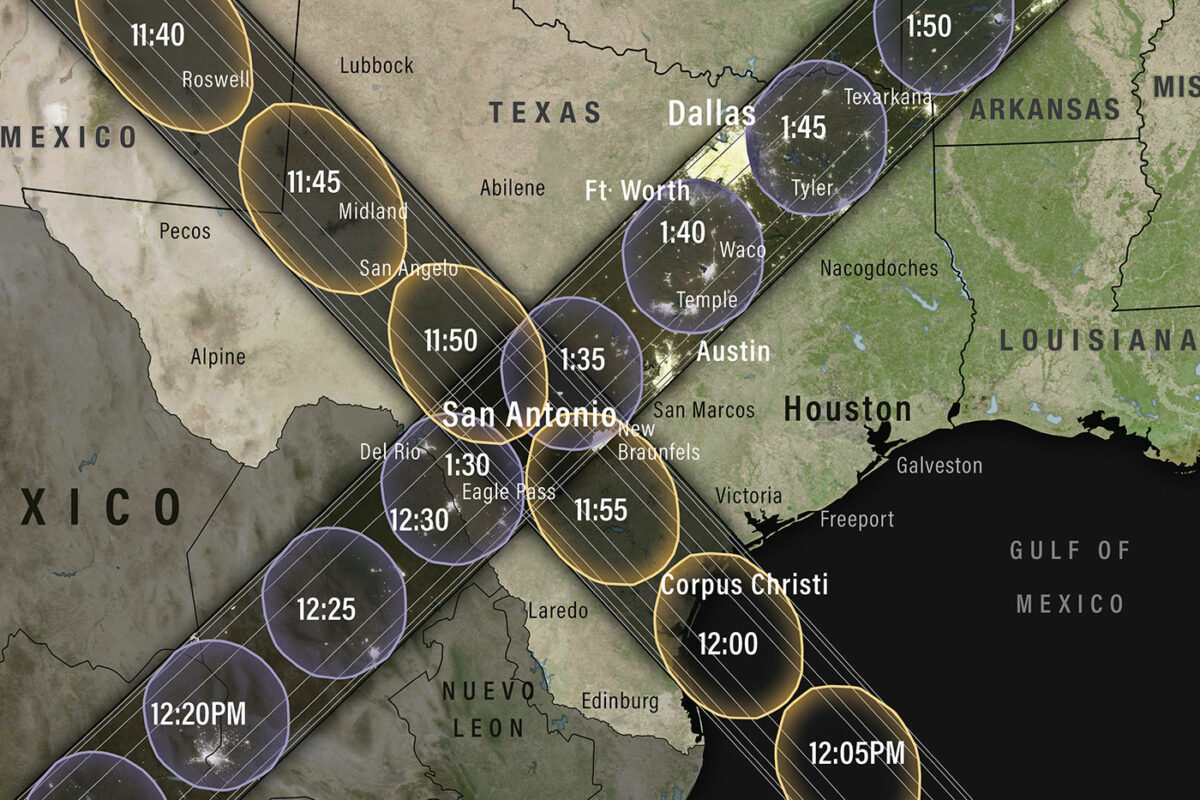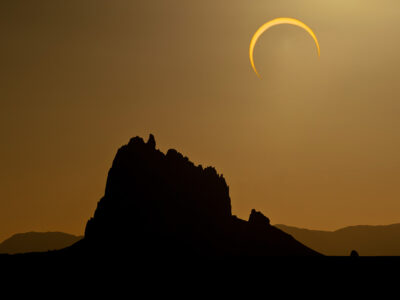The Alamo City is at the intersection of two solar eclipses passing over Texas in the coming months. The first, an annular solar eclipse that mostly obscures the Sun, will take place on October 14. But that’s not the one that interests Dr. Angela Speck.
“The annular eclipse is cool, but it’s nowhere near as cool as the total eclipse,” says Speck, professor and chair of the UTSA Department of Physics and Astronomy.
San Antonio will behold a total solar eclipse on April 8, 2024. This happens when the Moon passes directly between the Sun and Earth, casting a shadow on the planet and fully blocking out sunlight for a short period. The occurrence can only be seen from a small portion of the Earth’s surface.
“It’s the full-on experience of what you see, feel, hear, etc. It’s not like any other experience,” Speck says.
During a total solar eclipse, the sky darkens and the temperature drops, creating an unforgettable experience that Speck says everyone should see at least once in their lifetime.

On October 14, 2023, those in the Alamo City will witness the annular eclipse, which mostly obscures the Sun, and on April 8, 2024, those along the “path of totality” in parts of San Antonio and Boerne will witness a total solar eclipse.
Even for those not involved in scientific research, witnessing a total solar eclipse can be a life-changing experience.
“Most people don’t get to witness a total solar eclipse in their lifetime,” Speck says. “You have months to plan where you’re going to be, and it’s totally worth getting into the path so you can witness this amazing spectacle.”
The path of totality — the narrow strip of land where the eclipse can be seen in its entirety — will pass through several major cities including San Antonio and Boerne, Texas. A partial eclipse will still be visible across much of North America for those not in the path of totality, but Speck
says everyone should try to make their way to the northwest part of the city that day.
“Downtown San Antonio will not see it,” Speck explains. “If you get much further south than Alamo Heights, you’ll be outside the path of totality.”
April 2024’s total solar eclipse is the last chance to catch one stateside until 2044.


Exposure to intense light from the Sun for even just a few seconds can cause permanent damage to the retina and looking directly at a solar eclipse can cause retinal burns. To watch a solar eclipse safely, you need to either have special viewing equipment to protect your eyes or you can use an indirect viewing technique like a pinhole camera.
“But once the Moon completely blocks out the Sun,” Speck elaborates, “you don’t need anything. It’s safe to look at.”


